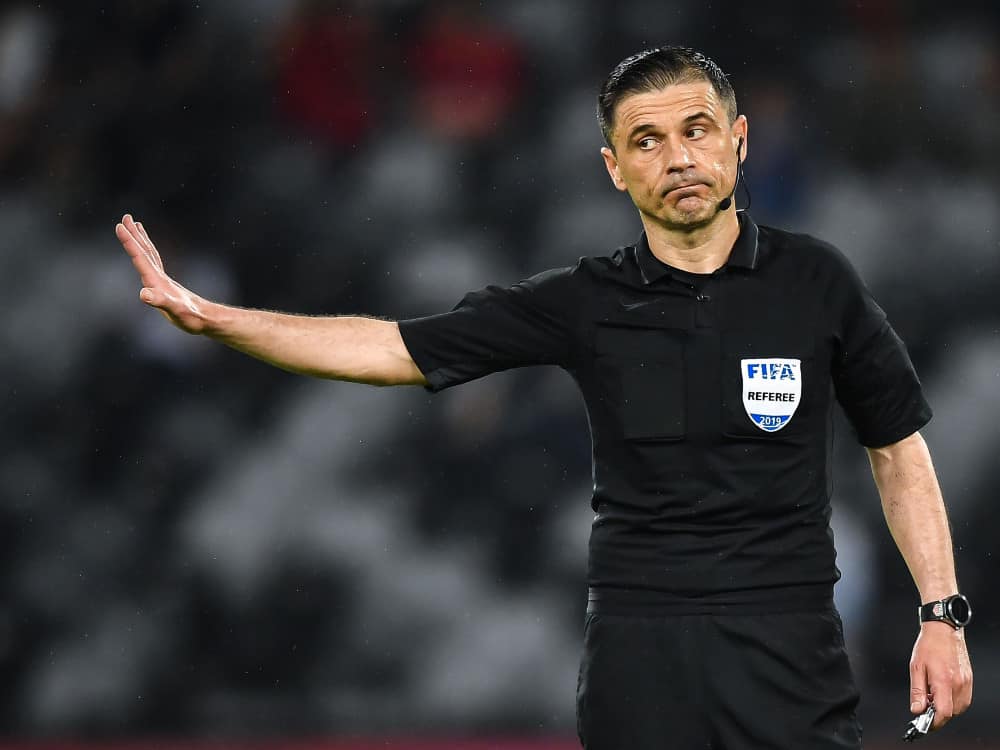Soccer has a unique time-keeping system that’s completely different from other sports, particularly those played in the United States. In keeping with the free-flowing nature of the game, the clock doesn’t stop when the ball is not in play.
Since basketball, American football, and plenty of other household sports stop the clock, what makes soccer so different? Why don’t they stop the clock in soccer?
Let’s take a look at the time-keeping system in soccer and explore the reasons they don’t stop the clock. Some of the main discussion points we’ll touch on include:
- When the clock stops
- How time is utilized in soccer
- Stoppage time
- What happens after regulation time
Would you make any changes to the time-keeping system? Read on and tell us what measures you’d like to introduce.

Why Don’t They Stop The Clock In Soccer?
The main reason for not stopping the clock is to keep the sport as fluid and natural as possible. This allows the soccer games to flow freely with minimal intervention from the referee.
In its essence, soccer is a relatively simple game. It can be played virtually anywhere with minimal equipment. While field and goal posts come in handy, you can easily play a game of street soccer with a ball and a couple of hoodies for makeshift goals.
Although a competitive or official game has more stringent requirements, they are negligible when compared to the likes of Baseball or American football.
Time-keeping can be controlled easily by the referee while also officiating the game. The ref makes notes of any major stoppages and adds them to the end of a game.
If the clock had to be stopped every time the ball went out of play or a free-kick was awarded, games would require extra officials to track time.
This approach would extend or delay natural breaks. Not only would this slow the game dramatically, but it would also dilute the purity and rhythm of a contest.
While it would be possible to introduce separate time-keepers in professional soccer, it would pose logistical issues at a youth or amateur level.
For the sanctity of the sport, it’s important to minimize the gap between the professional and amateur game in terms of rules and structure.
The time-keeping system is outlined in the IFAB’s official Laws of the Game. There are special instructions for referees to add on stoppage time at the end of either half. We’ll talk about stoppage time a little later on.
FAQs
How Much Time Is In A Soccer Game?
A professional soccer game is officially sanctioned for 90-minutes. The game is divided into two halves with an interval in between. The referee is responsible for keeping track of the time and signaling starts, stoppages, and restarts.
First Half
The first half starts on the referee’s signal. Both teams line up in formation inside their own half of the field. Once kick-off is taken, players are allowed to move freely around the field and the game is officially live.
The referee starts the clock as soon as the whistle is blown and doesn’t stop it until half-time.
The referee usually wears a second watch or has a separate timer to keep track of in-game stoppages. Once the regulation of 45 minutes plus the additional time has elapsed, the referee blows the whistle to signal the end of the half.
Although there are no specific rules as to when the half should end, the referee usually waits until there is at least some lull in the play to finish the half.
Although it happens on occasion, the referee rarely calls an end to the half if one team is on the attack. If this happens, it often sparks controversy among players and the game officials.
Half-Time
Before beginning the second half, players are given an interval. According to IFAB, the half-time break should last no longer than 15 minutes.
In general, specific tournaments have set limits for the half-time interval. However, it is generally 15 minutes for all competitions.
During half-time, players usually return to the locker room where they rehydrate and receive instructions from the coaching staff. The referee or an assistant signals to the locker room when half-time is over and the teams re-enter the field for the second half.
Second Half
As with most sports, teams swap sides for the second half of the game. The game is restarted in an identical fashion to the first half on the referee’s whistle. There are no rule changes to how the second half is run.
Stoppage Time Soccer
Stoppage time is added to the end of both halves of a soccer game. The referee is in charge of awarding these time allowances. In professional games, stoppage time is announced in the stadium by an assistant referee or game official.
The number of additional minutes is declared over an intercom and displayed via a digital board on the sideline.
IFAB states that the referee should allocate additional time for the following:
- Substitutions
- Water and cooling breaks
- Stoppages due to injuries
- Disciplinary actions, like giving yellow and red cards
- Delays for VAR checks and reviews
- Stoppages for goal celebrations
- Any other delays as deemed relevant by the referee
If there are extra delays during stoppage time, the referee can extend the game even further. If time-keeping errors occur in the first half, such as miscalculations of stoppage time, the referee must not compensate in the second half.
Stoppage time has delivered exceptional moments of drama in soccer. In his reign as Manchester United coach, Sir Alex Ferguson’s teams were known for pulling off feats of brilliance in the closing moments of the game, giving rise to an interesting nickname for late moments in the game and season.
“It’s getting tickly now – squeaky-bum time, I call it.”
Sir Alex Ferguson, 2003
Extra-Time In Soccer
In standard soccer league formats, when games end in a tie, it finishes as normal, with both sides earning 1 point each. However, in knockout games or cup tournaments, a tie leads to extra time.
At the end of 90 minutes, plus stoppage time, the referee blows the whistle to finish the game as normal. The teams are given a brief interval to prepare for extra time. This usually lasts the same length as half-time (15 minutes).
As with regulation games, extra time is divided into two halves. However, each half only lasts 15 minutes. Again, the referee adds additional time at the end of each half if necessary.
If the game is still level after extra time, the game goes to a penalty shootout. There’s nothing quite like a tense penalty shootout in an important cup game. Many major tournaments are decided by penalty shootouts every season.
Let’s take a look at some of the most dramatic penalty shootouts in the history of soccer:
| Year | Tournament | Teams | Shootout Score |
| 2002 | World Cup Quarter-Finals | South Korea vs Spain | 3-5 (Spain) |
| 2008 | Champions League Final | Manchester United vs Chelsea | 6-5 (Manchester United) |
| 1984 | European Cup Final | Liverpool vs Roma | 4-2 (Liverpool) |
| 1996 | European Championship Semi-Finals | England vs Germany | 6-5 (Germany) |
| 1990 | World Cup | West Germany vs England | 4-3 (West Germany) |
| 1994 | World Cup Final | Brazil vs Italy | 3-2 (Brazil) |
| 1986 | World Cup Quarter-Finals | France vs Brazil | 4-3 (France) |
| 2005 | Champions League Final | Liverpool vs AC Milan | 3-2 (Liverpool) |
| 1982 | World Cup Semi-Finals | West Germany vs France | 5-4 (West Germany) |
| 2006 | World Cup Final | France vs Italy | 3-5 (Italy) |
Joel is a seasoned soccer journalist and analyst with many years of experience in the field. Joel specializes in game analysis, player profiles, transfer news, and has a keen eye for the tactical nuances of the game. He played at various levels in the game and coached teams - he is happy to share his insight with you.



